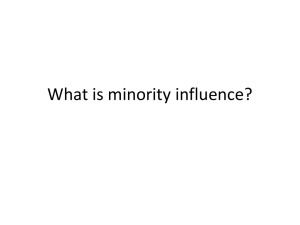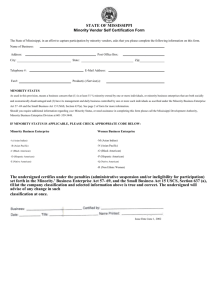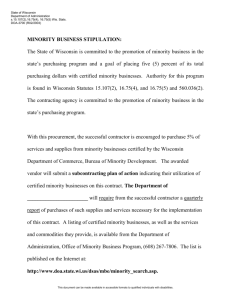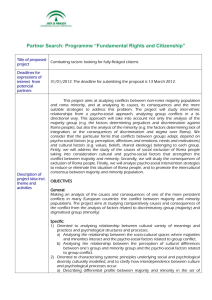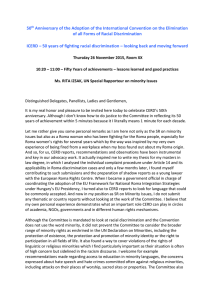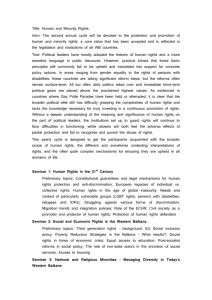Martin Levinson
advertisement
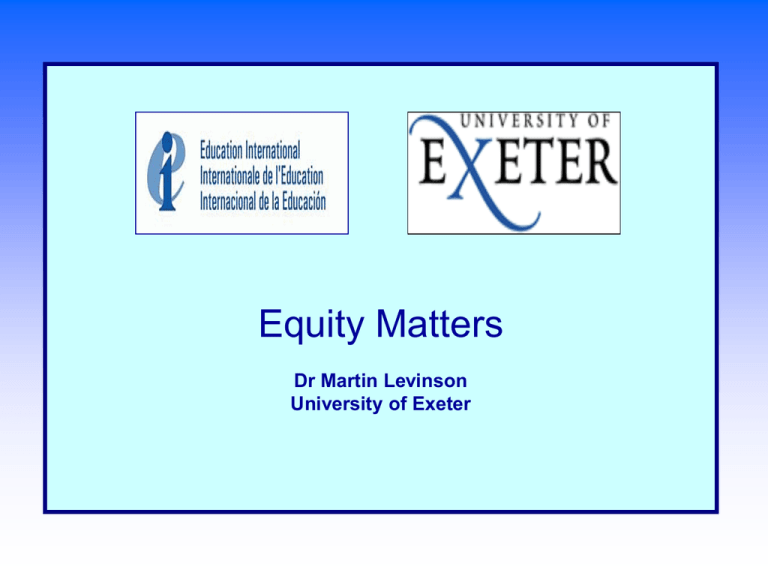
Equity Matters Dr Martin Levinson University of Exeter Equity issues with regard to minority / marginal groups Global context: What are the issues facing teachers and education policy-makers? • 101 million children out of school • 50% of whom are from minorities • (Data from 2009 report commissioned by UNICEF) Contextual issues • In developing countries in Asia and Africa access identified as central issue; • In Europe overcrowded classrooms, dilapidated buildings, poor teaching and language barriers identified as main barriers to the education of children from minority groups. Some issues highlighted in ‘Equity Matters’, EI commissioned study, 2010-11 • • • • Ethnocentric curricula Linguistic issues Resources Discrimination – institutional and structural, as well as from other children • Access • Under-achievement Contextual issues (Europe) • In Europe Roma groups identified as those most at risk. Access - in many cases such as in Kosovo or Turkey, enrolment in schools is impeded by problems in civil registration. • In numerous other cases in Europe, such as in the Czech Republic, Hungary, Macedonia, Romania, Serbia, or Slovakia, Roma children are placed in special schools with very low standards of education. Education needs to be considered against wider socio-economic and political landscapes • In certain countries rhetoric by certain politicians and sections of media against certain groups. • Crimes perpetrated against those groups sometimes pass without any prosecutions. • Children from minority groups more likely to be more economically deprived. Cultural discourse being overshadowed by economic discourse • Focus of policies on connection between education and employment. • Minority groups may have different outcomes and pathways in mind – e.g. Roma and migrant involvement in specific jobs / sectors, that may also relate to cultural identity • Disengagement in schools from children Low achievement – low expectations Segregation • Roma children, in particular, are more likely to be placed in special schools. • This a means of social segregation for apparent educational reasons. • Issues of provision. Cuts e.g. in Ireland • • Also question of who wants segregation? Segregation / Integration European ‘crisis’ – how to turn certain minority groups into ‘good citizens’? e.g. Merkel – Cameron speeches – But e.g. in UK – at same time as arguing for integration, encouragement of opportunities for privatisation taken up mainly by single faith schools. Example of resistance to multiculturalism • Governments often place obstacles in the way of mother tongue or multilingual education. Policy perspectives • ‘The ultimate aim is to get Traveller children socially included and educated. Our prime aim is attendance and inclusion. We want these children to be part of mainstream society. We don’t want them to lose their culture, which is highly valued in schools. It’s inclusion we’re after.’ • Head of Traveller Education, DFE. Considering matters from the perspectives of minority group members • Rights of individual and rights of group • Individual aspiration v. Cultural identity And what do the communities want? • “You look around here - you see many who could not read or write if their lives depended on it. Fred, Henry . . and they’re all doing very well, thank you very much.” (Jack, 30s) • “ We just get by as a group. In my own family they rely on each other. Take my niece – she’s eight years of age. Her father and mother get letters and say, “Mary, read that.” And Mary reads it. If they need stuff typed up, someone does it . . There’s always somebody to do your reading and writing. But when it comes to personal letters, it’s not so easy.” (Sally, 20s) Diversity within diversity • Minority groups are no more homogeneous than mainstream groups • There is diversity within them – regarding e.g. class and gender. • So we need to refine the way we consider minority groups.



